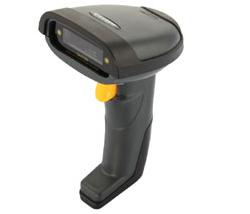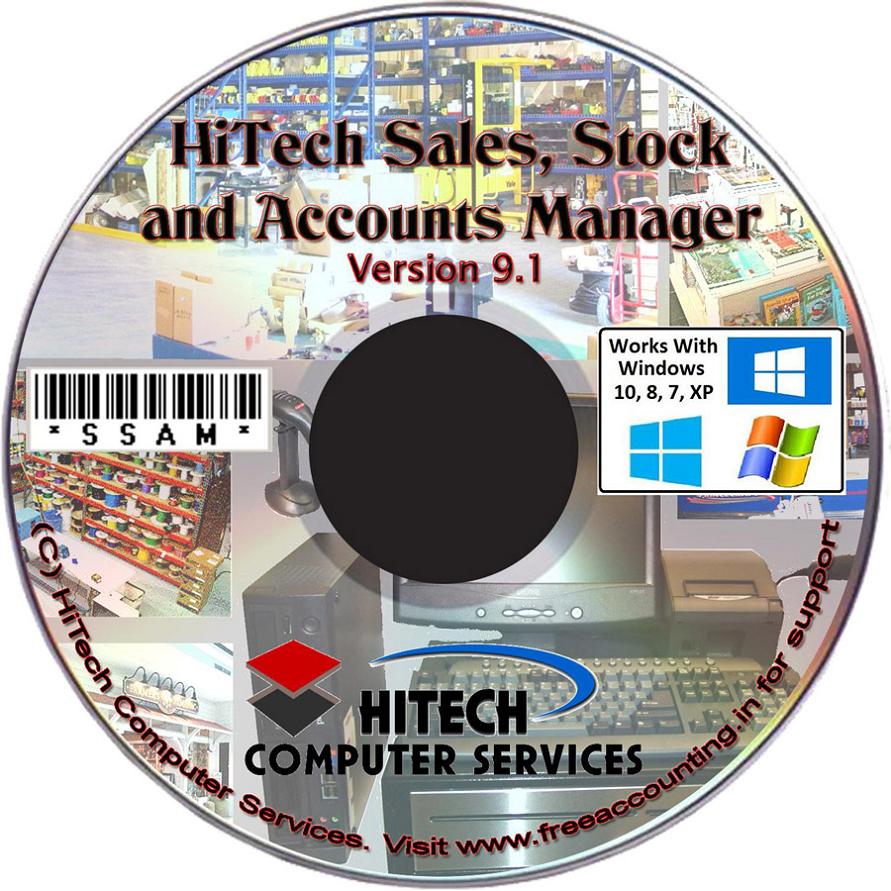It is the summary of such accounts which
effect the profit or loss of the concern. These are prepared by transferring
from the trial balance all nominal accounts and accounts relating to goods by
means of journal entries called 'closing entries'. All remaining accounts i.e.
real and personal, relating to properties, assets, debtors and creditors are
shown in the balance sheet. In order to know the overall picture of the effect
of these accounts they are grouped at one place. Items' increasing profit
(revenue) are put on one side (credit) and those decreasing profits (losses and
expenses) un the other side (debit). The balance is either net profit or net
loss. This income statement is normally divided into two parts - first part is
called trading account and second part is called profit and loss account. The
procedure for preparing various accounts is discussed in details in the
following pages:
Trading Account
As already discussed, first section of
trading and profit and loss account is called trading account. The aim of
preparing trading account is to find out gross profit or gross loss while that
of second section is to find out net profit or net
loss.
Perperation of Trading Account
Trading account is prepared mainly to know
the profitability of the goods bought (or manufactured) sold by the businessman.
The difference between selling price and cost of goods sold is the,5 earning of
the businessman. Thus in order to calculate the gross earning, it is necessary
to know:
(a) cost of goods sold.
(b) sales.
Total sales can be ascertained from the
sales ledger. The cost of goods sold is, however, calculated. n order to
calculate the cost of sales it is necessary to know its meaning. The 'cost of
goods' includes the purchase price of the goods plus expenses relating to
purchase of goods and brining the goods to the place of business. In order to
calculate the cost of goods " we should deduct from the total cost of goods
purchased the cost of goods in hand. We can study this phenomenon with the help
of following formula:
Opening stock + cost of purchases -
closing stock = cost of sales
As already discussed that the purpose of
preparing trading account is to calculate the gross profit of the business. It
can be described as excess of amount of 'Sales' over 'Cost of Sales'. This
definition can be explained in terms of following equation:
Gross Profit = Sales-Cost of goods sold or
(Sales + Closing Stock) -(Stock in the beginning + Purchases + Direct
Expenses)
The opening stock and purchases along with
buying and bringing expenses (direct exp.) are recorded the debit side whereas
sales and closing stock is recorded on the credit side. If credit side isJeater
than the debit side the difference is written on the debit side as gross profit
which is ultimately recorded on the credit side of profit and loss account. When
the debit side exceeds the credit side, the difference is gross loss which is
recorded at credit side and ultimately shown on the debit side of profit &
loss account.
Usual Items in a Trading Account:
A) Debit Side
1. Opening Stock. It is the stock which
remained unsold at the end of previous year. It must have been brought into
books with the help of opening entry; so it always appears inside the trial
balance. Generally, it is shown as first item at the debit side of trading
account. Of course, in the first year of a business there will be no opening
stock.
2. Purchases. It is normally second item on the debit side
of trading account. 'Purchases' mean total purchases i.e. cash plus credit
purchases. Any return outwards (purchases return) should be deducted out of
purchases to find out the net purchases. Sometimes goods are received before the
relevant invoice from the supplier. In such a situation, on the date of
preparing final accounts an entry should be passed to debit the purchases
account and to credit the suppliers' account with the cost of goods.
3. Buying Expenses. All expenses relating
to purchase of goods are also debited in the trading account. These
include-wages, carriage inwards freight, duty, clearing charges, dock charges,
excise duty, octroi and import duty etc.
4. Manufacturing Expenses. Such expenses
are incurred by businessmen to manufacture or to render the goods in saleable
condition viz., motive power, gas fuel, stores, royalties, factory expenses,
foreman and supervisor's salary etc.
Though manufacturing expenses are strictly
to be taken in the manufacturing account since we are preparing only trading
account, expenses of this type may also be included in the trading account.
(B) Credit Side
1. Sales. Sales mean total sales i.e. cash
plus credit sales. If there are any sales returns, these should be deducted from
sales. So net sales are credited to trading account. If an asset of the firm has
been sold, it should not be included in the sales.
2. Closing Stock. It is the value of stock
lying unsold in the godown or shop on the last date of accounting period.
Normally closing stock is given outside the trial balance in that case it is
shown on the credit side of trading account. But if it is given inside the trial
balance, it is not to be shown on the credit side of trading account but appears
only in the balance sheet as asset. Closing stock should be valued at cost or
market price whichever is less.
Valuation of Closing Stock
The ascertain the value of closing stock
it is necessary to make a complete inventory or list of all the items in the god
own together with quantities. On the basis of physical observation the stock
lists are prepared and the value of total stock is calculated on the basis of
unit value. Thus, it is clear that stock-taking entails (i) inventorying, (ii)
pricing. Each item is priced at cost, unless the market price is lower. Pricing
an inventory at cost is easy if cost remains fixed. But prices remain
fluctuating; so the valuation of stock is done on the basis of one of many
valuation methods.
The preparation of trading account
helps the trade to know the relationship between the costs be incurred and the
revenues earned and the level of efficiency with which operations have been
conducted. The ratio of gross profit to sales is very significant: it is arrived
at :
Gross Profit X 100 / Sales
With the help of G.P. ratio he can
ascertain as to how efficiently he is running the business higher the ratio,
better will be the efficiency.
Closing Entries pertaining to trading Account
For transferring various accounts relating
to goods and buying expenses, following closing entries recorded:
(i) For opening Stock: Debit trading
account and credit stock account
(ii) For purchases: Debit trading account
and credit purchases account, the amount being the et amount after deducting
purchases returns.
(iii) For purchases returns: Debit
purchases return account and credit purchases account.
(iv) For returns inwards: Debit sales
account and credit sales return account
(v) For direct expenses: Debit trading
account and credit direct expenses accounts individually.
(vi) For sales: Debit sales account and
credit trading account. We will find that all the accounts as mentioned above
will be closed with the exception of trading account
(vii) For closing stock: Debit closing
stock account and credit trading account After recording above entries the
trading account will be balanced and difference of two sides ascertained. If
credit side is more the result is gross profit for which following entry is
recorded.
(viii) For gross profit: Debit trading
account and credit profit and loss account If the result is gross loss the above
entry is reversed.
Profit and Loss Account
The profit and loss account is opened by
recording the gross profit (on credit side) or gross loss (debit side).
For earning net profit a businessman has
to incur many more expenses in addition to the direct expenses. Those expenses
are deducted from profit (or added to gross loss), the resultant figure will be
net profit or net loss.
The expenses which are recorded in profit
and loss account are ailed 'indirect expenses'. These be classified as follows:
Selling and distribution expenses.
These comprise of following
expenses:
(a) Salesmen's salary and
commission
(b) Commission to agents
(c) Freight & carriage on sales
(d) Sales tax
(e) Bad debts
(j) Advertising
(g) Packing expenses
(h) Export duty
Administrative Expenses.
These include:
(a) Office salaries & wages
(b) Insurance
(c) Legal expenses
(d) Trade expenses
(e) Rates & taxes
(f) Audit fees
(g) Insurance
(h) Rent
(i) Printing and stationery
(j) Postage and telegrams
(k) Bank charges
Financial Expenses
These comprise:
(a) Discount allowed
(b) Interest on Capital
(c) Interest on loan
(d) Discount Charges on bill discounted
Maintenance, depreciations and Provisions etc.
These include following expenses
(a) Repairs
(b) Depreciation on assets
(c) Provision or reserve for doubtful
debts
(d) Reserve for discount on debtors.
Along with above indirect expenses the
debit side of profit and loss account comprises of various business losses also.
On the credit side of profit and loss
account the items recorded are:
(a) Discount received
(b) Commission received
(c) Rent received
(d) Interest received
(e) Income from investments
(j) Profit on sale of assets
(g) Bad debts recovered
(h) Dividend received
(i) Apprenticeship premium etc.
Preparation of Profit and Loss Account
As already stated profit and loss account
is commenced with gross profit or gross loss as ascertained by trading account.
Then the profit and loss account is debited with all indirect expenses and
losses. This results in closing of indirect expenses and losses account. The
profit and loss account is then credited with various incomes and gains accounts
by which all these accounts are closed.
Explanation of Certain items of Profit and
Loss Account
1. Salaries
Salaries are paid for the services of
employees and are debited to profit and loss ac- count being indirect expense.
If any salary has been paid to proprietor or partners, it should be shown
separately because it requires special treatment at the time of income tax
assessment.
2. Salaries and Wages
When wages account is included with
salaries it treated is as indirect expense and is taken into profit and loss
account.
3. Rent
Rent of the office shop showroom or godown
is an indirect expense and so is debited to profit & loss account. However,
rent of factory is debited to trading account. When a part of the building has
been sublet the rent received should be shown on the credit side of profit and
loss account as a separate item.
4. Rates and Taxes
These are levied by the local authorities
to meet public expenditure. It being an indirect expenditure is shown on the
debit side of profit and loss account.
5. Interest
Interest on loan, overdraft or overdue
debts is payable by the firm. It is an indirect expense; so debited to profit
and loss account. Interest on loan advanced by the firm on depositor investments
is an income of the firm and so is credited to the profit and loss account.
If business has paid any
interest on capital to its proprietor or partners it should also be debited in
the profit and loss account but separately because this item needs special
treatment at the time of income-tax assessment.
6. Commission
In business sometimes agents are appointed
to effect sales, who are paid commission as their remuneration. So this being a
selling expenses is shown on the debit side of profit and loss account.
Sometimes commission is also paid on purchases of goods, such 'as expense should
be debited in the trading account. Sometimes the firm can also act as an agent
to the other business houses and in such cases it receives commission from them.
Commission so received is shown on the credit side of profit and loss account.
7. Trade Expenses
They are also termed as 'sundry expenses'.
Trade expenses represent expenses of such a nature for which it is not
worthwhile to open separate accounts. Trade expenses are not taken to trading
account.
8. Repairs
Repairs to the plant, machinery, building
are indirect expenses are treated expense and are debited to profit and loss
account..
9. Traveling Expenses
Unless mentioned otherwise, traveling
expenses are treated as indirect expenses and are debited to profit and loss
account.
10. Horse & stable Expentses
Expenses incurred for the fodder of horses
and wages paid for looking after stable are treated as indirect expenses and
debited to profit and loss account.
11. Apprentice Premium
This is the amount charged from persons to
whom training is imparted by the business. It is an income and is credited to
profit and loss account. In case apprentice premium is charged in advance for
two or three years, then the amount is distributed over number of years and each
year's profit and loss account is credited with its share of income.
12. Bad debts
It is the amount which could not be
recovered by the trader on account of credit sales. It is a business loss, so is
debited in the profit and loss account.
13. Life Insurance Premium
If the premium is paid on the life policy
of the proprietor of the business; it is treated as his drawings and is shown by
way of deduction from the capital account. It should not be taken to profit and
loss account.
14. Insurance Premium
If insurance premium account appears in
the trial balance, it stands for the insurance of the business. This is taken to
profit and loss account. Insurance premium on goods purchased, factory building,
factory machines are treated as direct expense and are taken to trading account.
15. Income Tax
In the case of merchant income-tax paid is
treated as a personal expense and is shown by way of deduction from capital
account. Income-tax in case of companies is treated differently.
16. Discount allowed and Received
Discount is a reward for prompt payment.
It is belief to show discount received and discount allowed separately on the
credit and debit side of profit and loss account respectively instead of showing
the net balance of this account.
17. Depreciation
Depreciation is a loss incurred on account
of use of fixed assets in the business. Generally, it is charged from profit and
loss account at a fixed percentage. The students should exercise great care as
regards the rate of depreciation. If rate is without words 'per annum', then the
rate will be taken irrespective of the period of accounts. This is very
important when the period of accounts is less than one year. On the other hand,
if the rate of depreciation is 'per annum' the depreciation should be calculated
on the assets with due consideration to the period for which the asset has been
used in business during the year. In case of additions to assets during the
year, it is advisable to ignore depreciation on additions if the date of
additions is not given. Same rule shall hold good for the sale of assets during
the year.
18. Stock at the end appearing in the
trial balance.
It is important to emphasize the rule that
balance appearing in the trial balance is taken to one and only one place. It
may either be trading account or profit and loss account or balance sheet. Since
stock at the end is an asset, it will betaken to balance sheet. On the other
hand, so long as there is stock in trade, account for that must be kept open and
thus be taken to the assets side of balance sheet.






 VAT Ready
VAT Ready






















